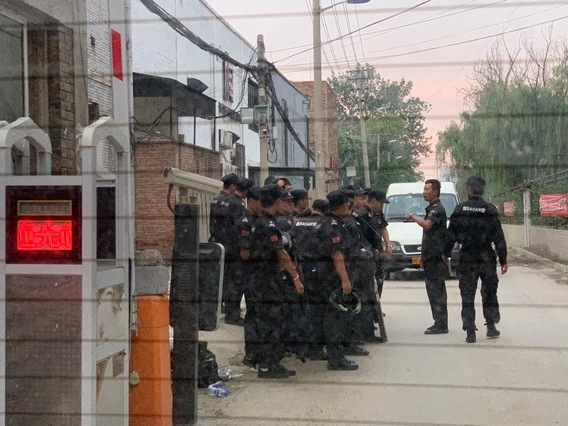
R
E
V N
E
X
T
On July 10, police outfitted in riot gear descended on Beijing’s Luomahu Art District to evict local artists from their studios, without formal explanation or offer of compensation, as reported in The Art Newspaper. Days earlier, on July 7, Huantie Art District similarly suffered a wave of unannounced evictions, which authorities claimed was a response to alleged mafia activity in the area.
Huantie-based artist Canon Duan told The Art Newspaper that the district’s inhabitants were given seven days to vacate their studios, and that photography and deliveries of takeaway and express packages were prohibited in the interim. A notice posted by Beijing authorities in Huantie on the same day that the evictions commenced stated that the clearance was part of the Chinese government’s crackdown on organized crime. The text linked artists with “security problems” and “unstable factors.”
Numerous art districts in the Chinese capital have been targeted for demolition in recent years. Last July, Caochangdi was abruptly cleared for demolition—allegedly to allow for the construction of a new railway—forcing several galleries, including de Sarthe, to shutter their spaces. The formerly Caochangdi-based Iowa artist cooperative was also forcibly evicted the year before, with authorities citing illegal construction as the reason for the commune’s demolition. Huantie was partially razed in mid-2017 on government orders, while Huang Rui’s studio compound in the neighborhood has been slated for demolition since September of that same year. Elsewhere in the city, Dongying, Sunhe, Suojiacun, and Heiqiao have been destroyed over the past decade.
Demolitions with little or no prior notice are not uncommon in Beijing, where officials commonly cite legal infractions pertaining to land use as explanations for their operations. However, affected artists and gallerists have speculated that mass evictions of art districts are part of government-sanctioned redevelopment and gentrification projects across the capital, where affordable spaces are increasingly hard to come by.
Cassie Liu is an editorial intern of ArtAsiaPacific.
To read more of ArtAsiaPacific’s articles, visit our Digital Library.











